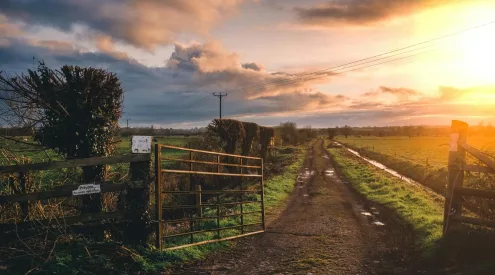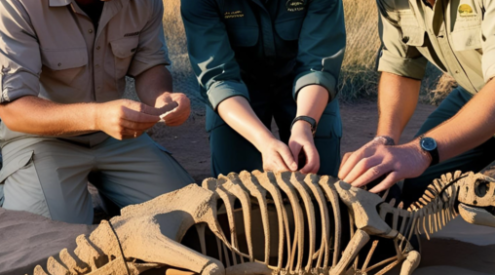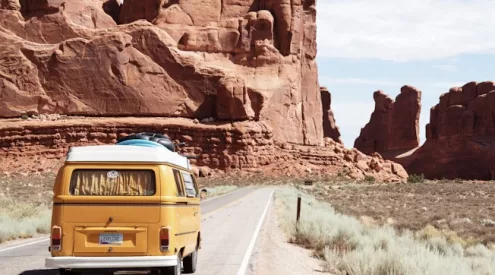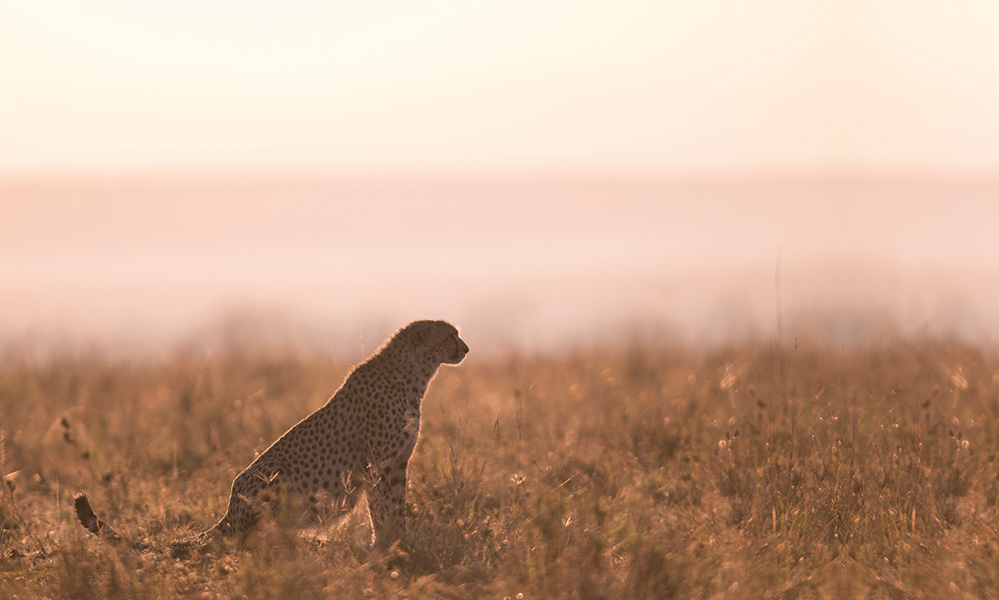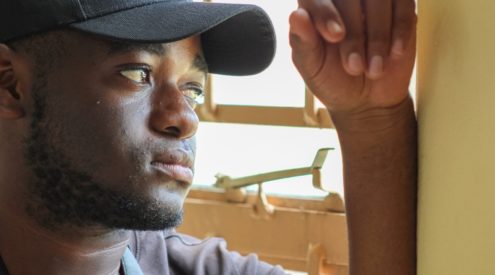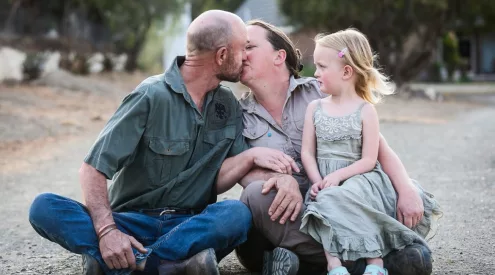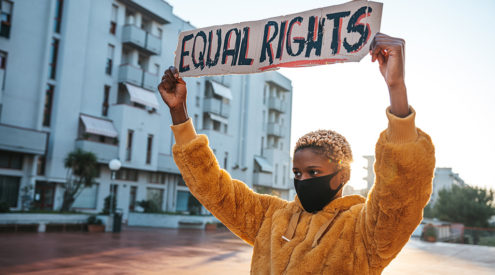Petting a lion might make you feel good, but how ethical are these interactions? By Janine Stephen.

This tears me apart. I am at an orphaned animal ‘rehab’ centre on a private reserve in KwaZulu-Natal. The teen serval has played with my shoelaces; I’ve gazed at an orange-eyed young cheetah. It is a kind of bliss to be so close to animals which are beyond beautiful; near mythical. But then we enter the leopard cub’s enclosure and despite the teen cat’s slinky grace, it feels wrong.
Whenever his handler is distracted, he keeps hunkering down to stalk people, muscles rippling under his spotted pelt. He is a few short months off being uncontrollable. And then what? Will he be released to live out his days in wilderness, forever free? A leopard with no fear of humans? I can’t see it happening, ‘rehabilitation’ talk or not.
Animal encounters have boomed in South Africa, catering to people who are hungry to touch and love wild animals plus snap a selfie while they’re at it. Tourists can walk with cheetahs all over the place, or give them a good stroking (the Endangered Wildlife Trust has noticed a huge growth in such encounters, particularly in the Free State and Western Cape). They can ride elephants like kings; or sit on their knees, or kick a ball to them.
They can swim with dolphins and whales and whale sharks and sharks (black-tips or tigers, the great whites require cages). Oh, and cage dive with crocs, in Oudtshoorn. The tourist pays for the privilege. Now, there have always been kind-hearted humans lavishing care on orphaned and injured wild animals, but it’s different when healthy animals are bred or sold to spend a life in captivity, to make someone a profit.
The Campaign Against Canned Hunting says lion cub petting and walking with young lions is just a money-spinning offshoot of the hunting industry. The stress cubs face through endless human interaction is bad enough. ‘Wild animals like lions and tigers have inherent natural behaviours, and exposure to unnatural conditions and human crowds and handling exacerbates their stress,’ says manager of the NSPCA Wildlife Protection Unit, Ainsley Hay.
Cubs also require ‘large periods of undisturbed sleep’ a rarity in any public facility where the animals are ‘expected to work every day’. But reintroducing captive-bred lions to the wild is near impossible on any scale. One ‘walk with lions’ outfit north of our borders boasted of a multiple-stage rehabilitation programme. In reality, it had not sent a lion back to real wilderness in eight years, although plenty lived in large fenced areas.
There are no conservation benefits to this, yet these outfits hoover up donations and well-meaning tourist cash. And so petted lion cubs (or tigers), sent out walking with tourists as teenagers, are often sold to hunting outfits as adults. Sounds crazy? In September, the Eastern Cape MEC for Economic Development, Environmental Affairs and Tourism confirmed that from 2008, the Seaview Predator Park in Port Elizabeth, for example, had sent 22 lions to Craddock hunting reserve Tam Safaris.
The Herald reported there had been 86 lion hunts at Tam in six years, although Tam claimed the lions from Seaview were used only for breeding. Tam Safaris exported 738kg of lion bones and teeth to Vietnam in 2012.

Photo by Rich Pearce.
Wild animals in captivity
‘Captive-bred large predators in this country become breeding machines to make more cubs for the petting industry, or they become trophies shot by hunters, or a skeleton exported to Asia for traditional medicine use,’ says the NSPCA’s Hay. The cheetah encounter industry is also a problem. EWT cheetah metapopulation co-ordinator Vincent van der Merwe says that in the last seven years, 27 percent of the cheetah moved off wild reserves were sold into captivity.
There are as many as 350 to 550 cheetah in captivity as opposed to 318 on 48 small reserves (excluding the Kruger and Kgalagadi). ‘The industry poses a serious threat to the [wild] cheetah population,’ Van der Merwe says. Many animal encounters can’t be condoned: dolphins and orcas in aquaria, for example, turning tricks for a living. Circuses are out. And I’m opposed to elephant encounters, as they inevitably require training.
With this comes the possibility of abuse (the pictures of wounds on babies belonging to the Knysna Elephant Park, inflicted during training in the Eastern Cape, are horrible reminders. Although the incident allegedly dates back to 2008, the story only broke in 2014). Being close to an elephant should be enough of an experience without subjecting it to human will.
And yet, and yet. Who hasn’t seen a child’s face light up in close proximity to an animal they have never seen? Can we say rehabilitation centres, sanctuaries, zoos or encounters should never exist – even the best of them? That humans have no right to display animals for education or profit? Some agree that people have no right, but do they have a responsibility to aid creatures harmed by human activities, from speeding cars, to pesticides or widespread habitat loss? A choice between conserving habitat with an endangered animal in it and shipping said animal to a captive breeding programme is a no-brainer. But sometimes there is no choice; no safe habitat left. So: a toughie.
There’s a bloke I trust on this stuff, although he’s dead now. He was an ornery part-scientist, part-renegade, and for all that he adored animals, he was never overly sentimental. Gerald Durrell did much to save such under-the-radar creatures as the Madagascan teal (not a flashy bird), the giant jumping rat, and the Mauritian pink pigeon, of which only 10 were left in the wild.
Durrell’s Jersey Zoo (now called the Durrell Wildlife Park) embodied ideals worth carrying over to any outfit offering any kind of animal encounter. Here they are: the primary reason they exist is to act as a reserve for endangered species that need help to survive in the wild. Education is a huge bonus: if animals have to be captured, we are duty-bound to learn more about them. But the end aim is to reintroduce the species to its natural habitat as soon as possible.
Pure entertainment, you’ll notice, is out. And that’s how it should be. It’s when a factory line of cute babies is needed to keep visitors streaming in that abuse can and will happen. This doesn’t mean selling tickets to see a bird with a broken wing or a former pet tiger that would otherwise have been shot is bad. Inviting the public in to help fund good work makes sense.
And I can’t brush off the educational spin-offs. When I was a kid, I went on a bird identification course at the local zoo and it ignited a fascination with birds and beasts that has never deserted me. Some critics say that if zoos and sanctuaries teach children anything, ‘it’s that imprisoning animals for our own entertainment is acceptable’. Not so. It is as likely to result in a commitment to seeing wildlife thrive and survive away from cages and people.
The key lesson underlying every encounter must be this: caring about animals means interacting with them on their terms, not ours. And that lucky, fleeting encounters in the wild are immeasurably more satisfying than a few fake strokes.
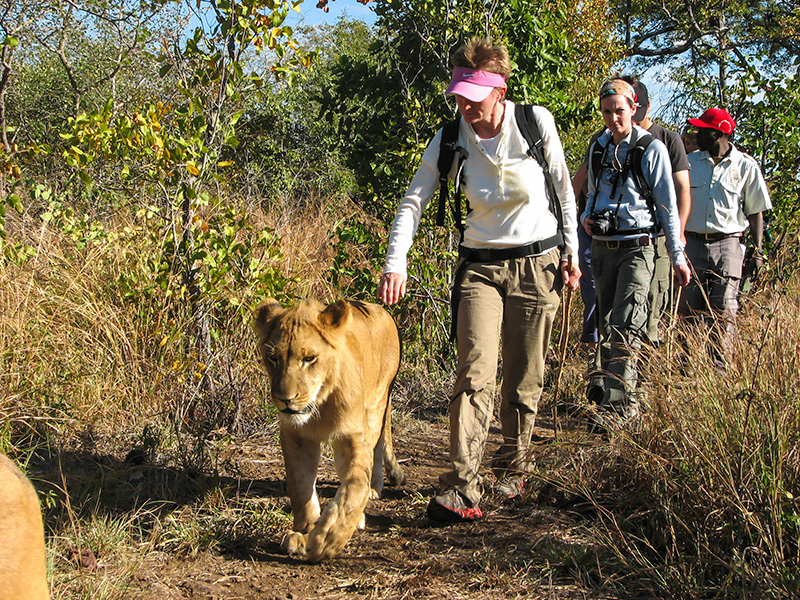
But I wanna stroke a cheetah…
Questions worth asking before buying a ticket
1. Are people interacting with the animals to be rehabilitated?
True rehabilitation centres won’t allow visitors, says Chris Mercer of the Campaign Against Canned Hunting, as the animals habituated to people cannot be released into the wild.
Some centres use ‘ambassador’ animals for education (such as a three-legged caracal, to warn against gin traps). But these animals should be unreleasable due to injury or prior habituation. Public access areas should be completely distinct from the rehab area. If not, animals are not being rehabilitated for release.
2. What is the value of any education or breeding programmes the outfit offers?
‘There is absolutely no ethical or conservation-based reason to breed large predators in captivity in South Africa,’ says the NSPCA’s Wildlife Protection Unit.
‘These animals… are imprinted and would never survive in the wild, or they are inbred and their genetics are diluted.’ The NSPCA points to a High Court case between the South African Predator Breeders Association and the Department of Environmental Affairs that confirmed that captive lion breeding ‘has nothing to do with conservation’. The NSPCA also refutes claims that captive breeding can be educational.
‘People can learn far more about wild animals by watching a documentary showing the animal’s natural behaviour in their natural habitats than looking at an animal in a cage, or playing with a baby animal.’
3. Would the animals be there if there were fewer public visitors?
If there is no demand for cub petting, from the public, cubs will not be removed from lionesses unnecessarily, says the NSPCA.
4. What happens to animals born here once they grow up?
‘Captive-bred large predators become breeding machines to make more cubs for the petting industry, or they become trophies shot by hunters, or a skeleton exported to Asia for traditional medicine use,’ says the NSPCA.
5. Are people allowed to touch the animals?
Are such encounters ‘staged’ (the animal has no choice) or by chance (the animal is curious enough to approach)? Many petted animals are required to be available to people paying to do so, and have no seclusion area to retreat to if they’ve had enough, say the NSPCA: completely unethical.
Ethical options for wildlife encounters
Wildlife Act Offers volunteer opportunities with research project in reserves in Zululand; endorsed by the WWF. Projects include monitoring wild dogs and leopard.
wildlifeact.com
SANCCOB Just about all these rescued seabirds really do go back home. Mandated by the South African government and registered with the International Union for the Conservation of Nature.
sanccob.co.za
Second Chance Wildlife Rehabilitation Centre Animals to be rehabilitated are not on public display. Supported by Mpumalanga’s parks.
scwrc.co.za
Hoedspruit Endangered Species Centre Breeds and releases cheetah and is accredited by Convention on International Trade in Endangered Species. Also a member of WESSA.
hesc.co.za
Moholoholo Wildlife Rehabilitation Centre Has bred and released over 160 serval into the wild.
moholoholo.co.za
*Note: certain of these centres may have ‘ambassador’ animals and encounters.
For a list of organisations that do not allow cub petting, and discussions on ethics, see the Facebook group Volunteers in Africa Beware.
This article originally appeared in the November 2014 issu of Getaway Magazine.


